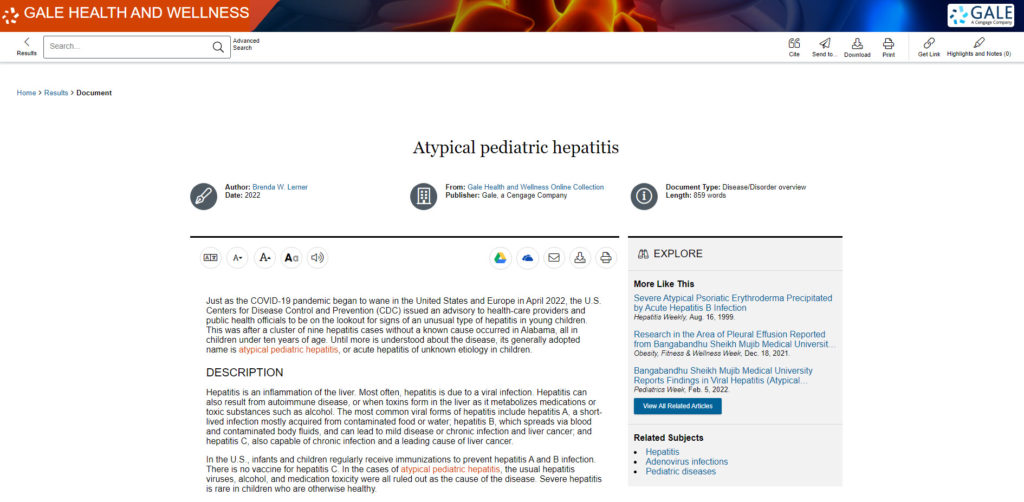| By Brenda W. Lerner, RN, ALB |
The Centers for Disease Control and Prevention (CDC) is spreading the word for pediatricians to look for signs in their young patients of an unusual disease that attacks the liver, causing a serious hepatitis-like syndrome. So far (as of late April 2022), the disease has killed one child in the United States and necessitated liver transplants for several others. Worldwide, about 200 cases of the illness have been identified in children within the last six months.
The condition became known so recently that it doesn’t yet have a name. The CDC has labeled it severe acute hepatitis in children, while other institutions speak of atypical pediatric hepatitis or acute hepatitis of unknown etiology (cause). Regardless of the name that eventually sticks for the illness, the remarkable worldwide health surveillance and reporting system, which begins locally and proceeds to the global network known as the International Health Regulations, functioned efficiently to get the word to health-care providers everywhere that a new disease threat to children has emerged.
When officials in Alabama noticed last November that nine children across the state, all under age 10, were admitted to hospitals within weeks of each other due to hepatitis that wasn’t caused by the viruses usually responsible for the disease (the hepatitis A, B, C, and E viruses), they notified both health-care providers within the state and the CDC. The CDC continued the investigation, sounded the alarm within the United States, and also notified the World Health Organization. Soon afterward, the United Kingdom reported 10 cases, which later expanded to 114. Ireland, Denmark, and Spain have also found similar cases.
Researchers and clinicians at the University of Alabama at Birmingham found a link between adenovirus infection and the unusual hepatitis when all nine affected children showed evidence of Adenovirus type 41 infection in their blood samples. Adenoviruses are a common group of viruses that are normally responsible for mild infections, with symptoms similar to a cold or stomach virus. Some adenoviruses are associated with causing more severe illness, but none were previously linked with causing hepatitis in otherwise healthy children. Hepatitis symptoms include diarrhea and nausea, along with yellowing of the eyes and skin (jaundice). None of the affected children in Alabama were infected with SARS-CoV-2, the virus that causes COVID-19. About 70 percent of the affected children in the UK and Europe had evidence of infection with Adenovirus 41 and/or SARS-CoV-2.
So far, the cause of this severe form of hepatitis remains a mystery. Among the possibilities that exist are reactions to Adenovirus 41 infection, SARS-CoV-2 infection, simultaneous infection with both viruses, extreme immune responses to exposure to common viruses after extended isolation during the pandemic, or something new and yet unknown. Public health authorities say the best protection from the disease at this point involves similar precautions taken during the pandemic: washing hands with soap and water for at least 20 seconds, avoiding contact with infected persons, coughing and sneezing into a tissue, masking, and disinfecting surfaces.

As more information about this mystery unfolds, it is important for news to disseminate rapidly to both health-care workers and to the concerned public. During the past two pandemic years, we’ve learned that where newly emergent diseases are concerned, information changes quickly. More information about the disease is available at Gale Health & Wellness in an entry entitled “Atypical pediatric hepatitis.” We’ll update our information about this newly emergent health concern frequently, along with other time-sensitive information necessary for maintaining health.
About the Author
Brenda Wilmoth Lerner is a writer and editor specializing in global health. Volunteer nursing has taken her far and wide, but she especially values her time at home on the Gulf Coast.

